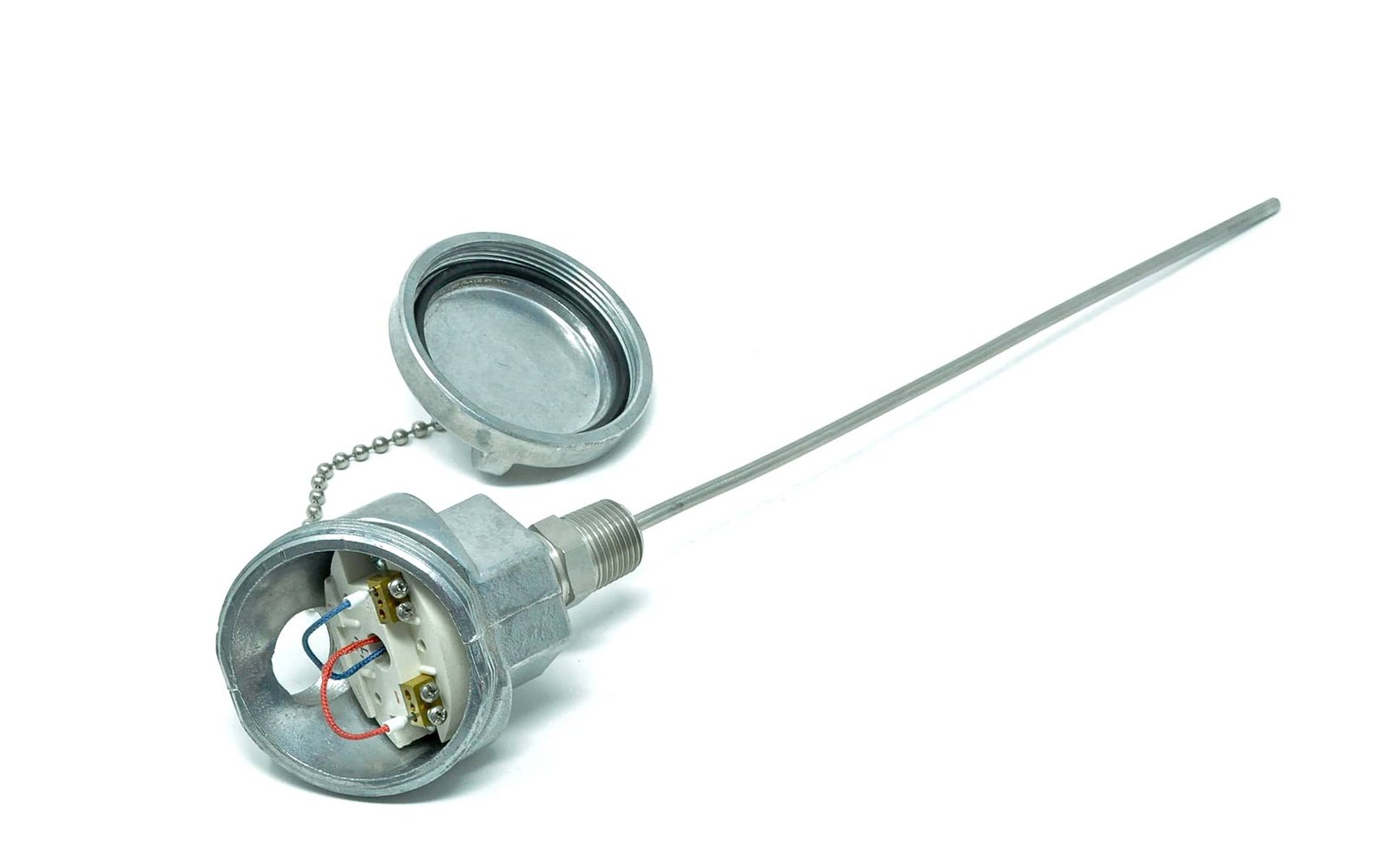
What is a Thermocouple?
Sensing temperature is an essential process for many activities that occur all around us. Think of the air conditioning that is making your room comfortable, the automobiles driving down the road, the aircraft flying overhead, or even the power plant that is generating the electricity you are currently using. Those activities may be quite different from each other, but they share at least one thing in common: thermocouple temperature sensing. So what exactly is a thermocouple? How does it work? What is it’s usages? Let’s investigate the question: What is a thermocouple?
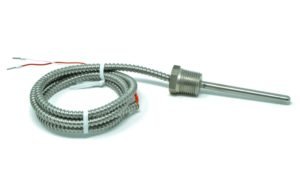
Figure 1: A real-life thermocouple!
What is a Thermocouple?
A thermocouple measures temperature, so technically, a thermocouple is a type of thermometer. Of course, not all thermometers are the same. Two different metals make up a thermocouple. Generally, in the form of two wires twisted, welded, or crimped together. Temperature is sensed by measuring the voltage. Heating a metal wire will cause electrons within the wire to get excited and want to move. We can measure this potential for electrons to move with a multimeter. With this measurement, we can calculate the temperature.
In short, a thermocouple translates temperature energy into an electrical signal. This signal can be acted upon, perhaps directly by a person who is monitoring the thermocouple. But more likely by an automated system that observes, records, or uses the data to perform an action. Let’s take a look at a diagram of a thermocouple to get an idea of how this instrument works.

Figure 2: Basic Thermocouple
As you can see in Figure 2, a thermocouple is a relatively simple instrument. Two wires comprised of dissimilar metals are connected where the temperature needs to be measured. This connection is called the measurement junction. The other ends of the wires are also connected. But this time in an area where the temperature is known. This area is called the reference junction. Let’s do a small experiment by heating one end of the thermocouple and adding a way to measure what happens.

Figure 3: Heating a thermocouple
By applying heat to the measurement junction, we can cause electrons in the metal wire to excite and flow, producing a current. Since we are looking to measure the voltage of this current, we have connected the reference junction to a multimeter with copper wire. The current sensed by our multimeter gives us a reading in millivolts (mV). Let’s increase the temperature at our measurement junction and see what happens to the reading on our multimeter.
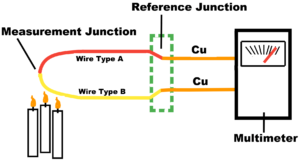
Figure 4: Applying more heat
As the measurement junction heats up more, the reading on our multimeter at the reference junction will increase correspondingly. The important part about the value on our multimeter is that it is a function of the difference in temperature between the two junctions. We can chart this relationship between the two variables. Thus if we know the temperature of the controlled reference junction and can measure the voltage change as the measurement junction is heated. We can then determine the temperature at the measurement junction.
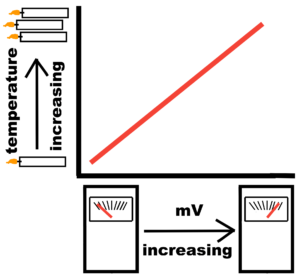
Figure 5: Charting temperature vs. voltage
Although a thermocouple does not directly tell us the temperature of the measurement junction, it does give us a voltage. This voltage is a readable electrical signal that is dependent on the difference in temperature between the measurement and reference junctions. You can graph or table this correlation between voltage and temperature. And we can reference the voltage signal to determine the associated temperature. Some aspects, like the type of wires used and the temperature of the reference junction, must stay constant. But ultimately, we have a repeatable process to measure temperature, one that is infinitely replicable.
The Science behind a Thermocouple
Let’s walk through the science behind a thermocouple in a little more detail. We’ll start with two different metal wires, one is made out of iron (Fe), and the other is made out of constantan (an alloy of copper and nickel, CuNi). Combining these wires together creates a voltage potential. A voltage potential is a capacity for current to flow, which will vary depending on the properties of the metals that the connected wires are made from.
Keep in mind; nothing is really happening just by joining two wires together, merely the potential for something to happen. In this case, the potential for current to flow. An easy way to think about this voltage potential is to imagine a stationary boulder just sitting at the top of a hill. If you introduce a force to that then you’d have a lot of rock hurtling down the hill. However, until you push the rock, there is only potential.
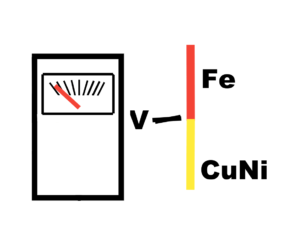
Figure 6: two wires connected, making a Voltage potential
With our wires only connected at one point there is no chance for current to flow. However, if we connect the other end of the wires together we create a circuit, or a pathway, that current can follow. Since we have, once again, connected two wires together, we have also produced another voltage potential. Remember, that is just the potential for current to flow. Also, since the two junctions are both iron and nickel wire connecting to each other, these two voltages are identical; there is no measurable difference between them.

Figure 7: two wires connected in a circuit with two voltage potentials
In the previous diagram, we have a circuit comprised of two different metal wires with two voltages. The final ingredient needed to complete this thermocouple walkthrough is temperature, or more accurately, a difference in temperature. Let’s heat up one of the wire connections. The difference in temperature at one end creates a different voltage. Finally, we have something we can measure. If we keep heating one end up, creating a larger and more significant temperature difference, we can measure a larger and larger voltage difference. Take a look below at figure 8, isn’t that beginning to resemble our basic thermocouple?

Figure 8: circuit, heating one end leads to voltage difference
Now, a complete thermocouple is more than just a couple of wires; that is merely the most basic form they can take. For example, modern-day thermocouples are usually built with some sort of outer sheath and insulation to help protect against corrosion and wear.
Also, they aren’t usually hooked up to multimeters, like in our examples above. That’s not to say you can’t have a worker reading off voltage measurements and comparing them to a table of temperatures. However, one typically connects thermocouples to a centralized computer system. A sort of automation that can receive the readings made by thermocouples and act upon that data. Finally, the voltage measured does not correlate to a temperature reading in a straight line. Thermocouple outputs are not linear, so our graph in figure 5 is grossly oversimplified.
There are many small details about this temperature sensor that is easy to gloss over, but the important thing is getting an understanding of the basics behind this instrument. For a more in-depth discussion head on over to “Q & A: What is a Thermocouple?” where you can find answers to help you fill in some of the gaps.
Have we piqued your interest in thermocouples? If you want to see the variety and real-world availability of different thermocouples. Head on over HERE and see the thermocouples that Enercorp manufactures.
What are Thermocouple Differences?
Thermocouples come in many shapes, sizes, and materials. The various properties of different metals are the key to thermocouple operation. We’re really measuring how two different wires react in the same environment, and computing those minute differences to a standard temperature reference. Typical metals used in thermocouples are iron (Fe), copper (Cu), nickel (Ni), constantan (a Cu/Ni alloy), Nichrome (a nickel and chromium (Cr) alloy), and platinum (Pt). Each metal brings certain advantages, and disadvantages, to thermocouple temperature measurement.
Certain combinations of metal may work well for colder temperatures but not for hot. Other combinations might give a more accurate reading within a specific range of temperatures. Also, another combination could be more resilient to the corrosive environment where it is being used—adding a longer lifespan to the thermocouple before it needs to be replaced.
There are so many differences between thermocouples. Why not check out our blog “Thermocouple Differences” which is dedicated to examining the wide range of different thermocouple types and the specific areas where they excel.
Where to Use Thermocouples?
With the variety of different types of thermocouples comes an equally diverse set of uses. Sure, a thermocouple might just do only one thing, tell the temperature, but it can cover such a broad range of measurement and is so versatile that it can be a useful tool for many different industries and environments.
The manufacturing of goods requires a precise measurement of all sorts of gases and liquids. HVAC systems need data fed to an automated centralized system to make for a comfortable living and working environment. Transportation, petrochemical, and energy production are all areas where you can find thermocouples in use. There are endless possibilities since so many different processes of our modern-day require some sort of temperature sensing capability. To see just how vast the world of thermocouples really is, take a look at our blog “What are Thermocouples used for?”.
So now you know a little more about thermocouples. Here at Enercorp, we stock and custom-manufacture thermocouples to meet all sorts of needs. Our customers range from energy producers to food processing companies to industry, like steel-making, and many more. These may be a diverse group of clients, but they all share the same universal need: thermocouple temperature sensing.


